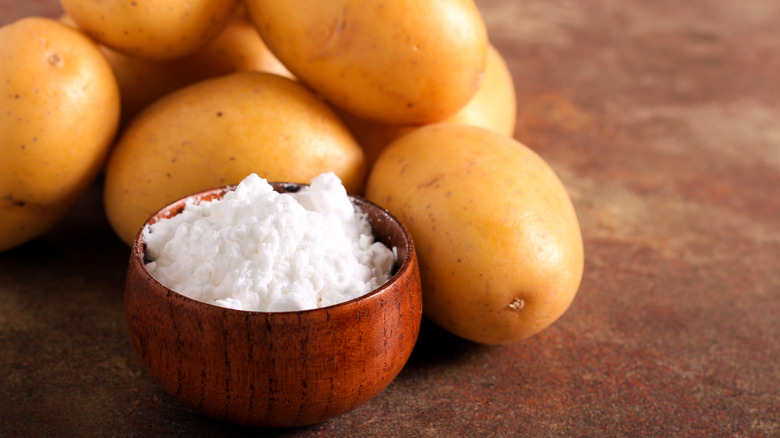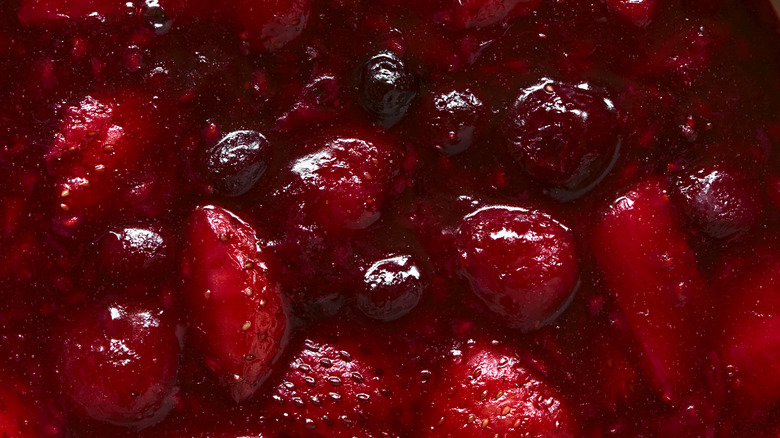Why Potato Starch Can Be Found In A Wide Variety Of Recipes
You've heard of cornstarch and tapioca starch, but what about starch made from spuds? A gluten-free alternative, the silky powder is not only odorless but also tasteless, making it a suitable choice for both sweet and savory recipes. But beyond its blank-canvas profile, potato starch is actually a versatile ingredient thanks to its unique composition.
While potato starch and potato flour are sometimes used interchangeably, the two can't be substituted for one another so easily. Made by pulverizing a previously-cooked dehydrated potato, Allrecipes explains that potato flour has a much more intense tuber taste, along with a richer hue. In contrast, potato starch is made by extracting the starchy grains found in potatoes, and then grinding them into a fine, white powder, reports MasterClass. Naturally, potato starch's uses vary vastly.
Like other starches, Science of Cooking states that when a starch interacts with liquid and heat, it swells until it ruptures. This then releases the starch, causing viscosity to increase in the mixture. But what's so special about potato starch in particular?
Spud starch thickens, binds, and gels
Similar to cornstarch, starch made from tubers is probably best recognized as a thickening agent. A couple of spoonfuls can turn runny soups, gravies, and pie fillings into rich, silky sauces that'll bulk up as they simmer — and don't worry about temperature as potato starch can tolerate high temperatures, reports Bob's Red Mill.
Along with acting as a thickener, Martha Stewart explains that this spud-based starch can also act as a great binding agent in the kitchen, improving the stability and also the texture of foods, making cookies crisper, cakes fluffier, and latkes (or a drumstick of fried chicken) crunchier. Another benefit of potato starch? It has no gluten, making it an ideal replacement for gluten-free recipes, per Science of Cooking.
But that's not all, potato starch also has incredible gelling properties. According to Serious Eats, as starch granules hydrate and swell as they're heated, they undergo a process of gelatinization which is responsible for chewiness, in addition to any glossiness and crispness that starch may produce based on how much liquid, heat, and time is applied to potato starch.

